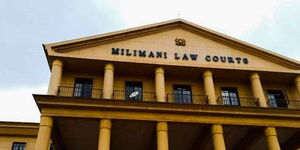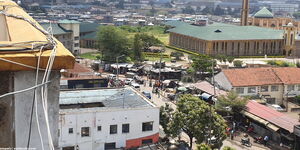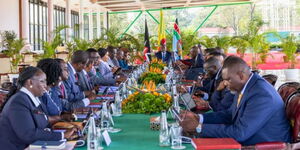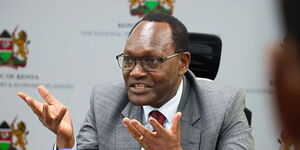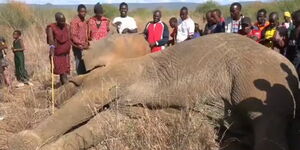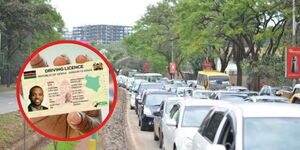President William Ruto has stirred controversy with his claim that the 12-year-old boy shot in Ong’ata Rongai on Thursday, June 27, was killed by a civilian who allegedly stole a gun from the police. This assertion challenges widespread beliefs and online narratives surrounding the incident.
Kennedy Onyango, the young victim, was reportedly shot eight times. President Ruto insists the shots came from a civilian, despite strong opposition from the public and vocal dissenters on X Space. The president remains steadfast in his stance, undeterred by the backlash.
Our investigation into the events in Ong’ata Rongai reveals that a group of protestors managed to isolate a police officer, eventually overpowering him and seizing his pistol.
The protestors continued to assault the officer until he was rescued by his colleagues. Witnesses report that one of the protestors fired two shots into the air before returning the weapon to the police.
However, President Ruto's narrative deviates from these accounts. "The 12-year-old boy shot in Rongai was not killed by a police officer. Criminals grabbed a firearm from the police officer and shot indiscriminately," Ruto declared.
Efforts by Ruto to contact the boy's mother, Jessica Onyango, have yet to succeed. He mentioned leaving a message for her and indicated his intention to continue trying to reach her after his engagement on X Space.
The tragic shooting of Kennedy Onyango occurred during anti-Finance Bill protests in Rongai, Kajiado County. In his inaugural X Space conversation with the youth, Ruto reiterated his claim: "Kennedy Onyango was shot by a criminal who snatched a gun from an officer and started shooting indiscriminately."
Earlier, Ruto promised government support for the families of those who lost their lives and those injured during the protests. Addressing the nation on Friday afternoon, he conveyed condolences to the bereaved families. "To the many others who lost their lives, I send my condolences to the families," he said. "The government will support all those who have lost their lives, and all those who have been injured."
According to the Kenya National Human Rights Commission (KNHRC), at least 41 people died and 361 were injured during the anti-Finance Bill protests, which spanned from June 18 to July 1, 2024. KNHRC chairperson Roseline Odede highlighted that most postmortems for the victims have yet to be conducted. She expressed concern over the transformation of initially peaceful demonstrations into violent encounters by June 25.
"The demonstrations resulted in several deaths, injuries, and property damage," Odede stated. The deceased include victims from various regions, including Nairobi (17), Nakuru (3), Laikipia (1), Narok (1), Kajiado (3), Uasin Gishu (4), Kakamega (1), Kisumu (2), Kisii (1), Mombasa (3), Siaya (1), Kiambu (1), and Nandi (1).
During his X Space session, Ruto reiterated that the protests, which were intended to oppose new taxes proposed for the financial year, were peaceful initially but were later infiltrated by criminals.

